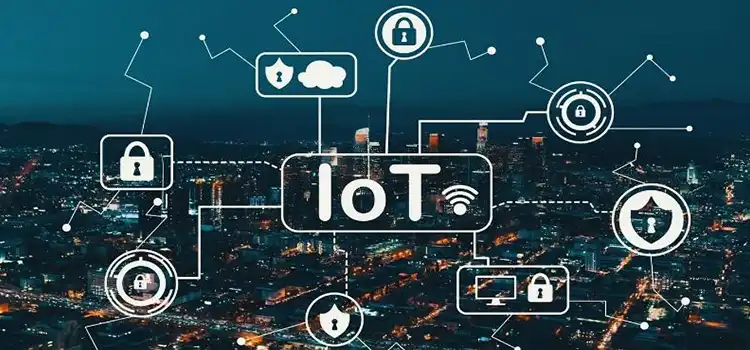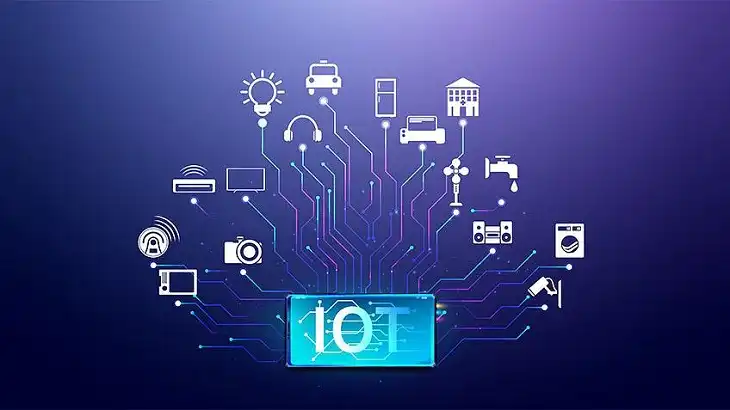Internet of Things (IoT) Circuits: Connecting the Physical World
IoT-connected devices create a world where physical objects like sensors, on-device software, and adjacent technologies exchange data with other systems and devices. The connection between IoT “things” enables these exchanges, unlocking immense value across the value chain. Organizations seize new opportunities, business models, and revenues facilitated by IoT connections.
Depending on IoT device requirements, various connection types are employed. From infrequent communication with minimal data for some IoT and connected devices to the high-speed, low-latency transmission of large data volumes for always-connected IoT devices. The range of IoT connections accommodates anything from a dental implant to a massive tractor.

What Are the Key Components of IoT Circuits?
Main components of IoT circuits:
- Sensors: At the forefront of IoT circuits, sensors play a critical role by collecting data from the physical world.
- Microcontrollers: Serving as the central processing units, microcontrollers are the brains behind IoT circuits.
- Connectivity: An essential component, connectivity enables seamless communication between IoT devices.
- Actuators: Acting as the executive agents, actuators translate digital commands into tangible actions.
- Power Supply: Fundamental to sustained operation, a reliable power supply ensures that IoT circuits remain active and responsive.
It’s worth thinking about how you secure your Internet of Things. They collect and send a lot of valuable information, for example, the same camera, and you do not protect them. How do I know this? Most users are unaware of, and therefore do not take, any action to secure their IoT devices. One of the approaches that really works is using a VPN. However, it’s worth checking the VPN status to make sure it’s doing its job. More details at the link above. If the VPN works as it should, then your data and devices will be protected.
What Are the Building Basics of IoT Circuits?
Building IoT circuits involves a systematic process that encompasses planning, programming, assembling, and testing. Here’s a breakdown of the building basics:
Planning Circuit Design and Components
- Identify Requirements: Clearly define the purpose and functionality of the IoT circuit.
- Select Components: Choose appropriate sensors, microcontrollers, actuators, and other necessary components based on the project requirements.
- Design Circuit Layout: Plan the physical layout of the circuit, considering the placement of components and the overall structure.
Programming the Microcontroller
- Code Development: Write and implement the necessary code for the microcontroller to process data from sensors, make decisions, and control actuators.
- Interface Design: Ensure a smooth interface between the microcontroller and other components, establishing effective communication channels.
Assembling the Circuit with Connectors and Boards
- Physical Assembly: Place components on circuit boards, connecting them using appropriate wires, connectors, and soldering techniques.
- Follow Guidelines: Adhere to design guidelines and specifications to avoid electrical issues and ensure proper functioning.
Testing Connectivity and Functionality
- Connectivity Testing: Verify that communication channels between components, including sensors, microcontrollers, and actuators, are established and functioning correctly.
- Functional Testing: Ensure that the IoT circuit performs as intended, responding appropriately to input from sensors and delivering the desired output through actuators.
- Debugging: Address any issues identified during testing, modifying code or circuitry as necessary to optimize performance.
Applications of IoT Circuits: Connecting the Physical World
When exploring IoT applications, which are occasionally referred to as use cases, you can gain a better understanding of what IoT entails. Broadly speaking, IoT applications occur within distinct settings.
- Human Health: You can attach or insert devices inside your body, like wearable or ingestible gadgets that monitor your health and wellness, assist in managing diseases such as diabetes, and more.
- Home: As a homeowner, you have the option to install devices such as home voice assistants, automated vacuums, or security systems.
- Retail Environments: Devices can be installed in stores, banks, restaurants, and arenas to facilitate self-checkout, extend in-store offers, or help optimize inventory.
- Offices: In offices, IoT applications can involve energy management or building security.
- Standardized Production Environments: In settings like manufacturing plants, hospitals, or farms, IoT applications often aim to improve operational efficiency or optimize equipment utilization and inventory management.
- Custom Production Environments: In customized settings such as mining, construction, or oil and gas exploration and production, IoT applications might be used for predictive maintenance or health and safety efforts.
- Vehicles: IoT can assist with condition-based maintenance, usage-based design, or presales analytics for cars, trucks, ships, airplanes, and trains.
- Cities: IoT applications can be used for adaptive traffic control, smart meters, environmental monitoring, or resource management.
- Outside: In urban or outdoor environments like railroad tracks, autonomous vehicles, or flight navigation, IoT applications could involve real-time routing, connected navigation, or shipment tracking.
Challenges and Future of IoT Circuits

Privacy and Security Concerns
- Challenge: The increased connectivity of IoT devices raises significant privacy and security challenges. Vulnerabilities in devices can lead to unauthorized access and data breaches.
- Future Direction: Addressing these concerns will require the implementation of robust encryption, authentication, and security protocols. One of the most affordable solutions for small businesses and individuals is a free VPN. Continued research and development are essential to stay ahead of evolving cybersecurity threats.
Interoperability and Open Standards
- Challenge: The lack of standardized protocols can hinder seamless communication and interoperability between different IoT devices and platforms.
- Future Direction: Establishing open standards and interoperability protocols will be crucial for ensuring a cohesive IoT ecosystem. Industry collaboration and the development of common frameworks will facilitate device compatibility and integration.
Innovation in Sensors, Connectivity, and Analytics
- Challenge: As IoT continues to evolve, there is a constant demand for more advanced sensors, improved connectivity options, and enhanced analytics capabilities.
- Future Direction: Innovation in sensor technology, the development of faster and more reliable connectivity solutions (such as 5G), and advancements in data analytics will contribute to more sophisticated and capable IoT circuits. This will enable real-time insights and decision-making.
Growth Opportunities and Economic Impact
- Challenge: Balancing the economic impact of IoT growth with ethical considerations and potential job displacement can pose challenges.
- Future Direction: Identifying and harnessing growth opportunities in IoT industries while addressing social and economic implications will require strategic planning and policy development. This includes initiatives for reskilling the workforce to adapt to the changing job landscape.
Conclusion
IoT allows us to better digitize the physical world, but they can also impact it. In fact, with a complete IoT chain, almost everything can be automated. However, these benefits are only possible if existing difficulties can be overcome. This is possible, you just need to take into account the listed aspects in advance and look for a solution for them.
Subscribe to our newsletter
& plug into
the world of circuits